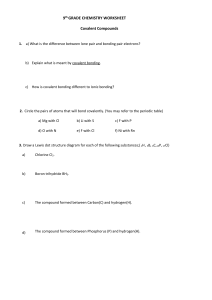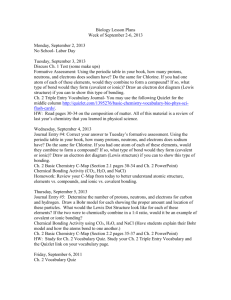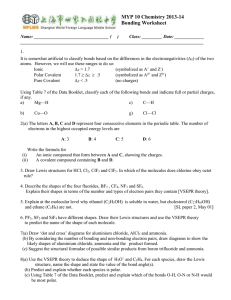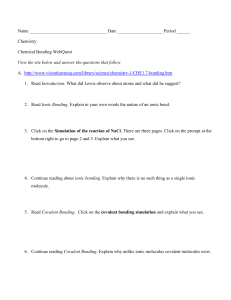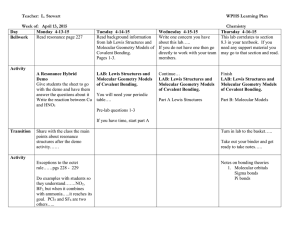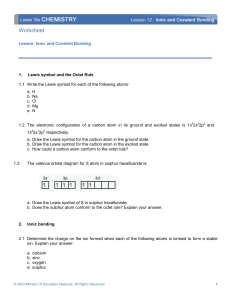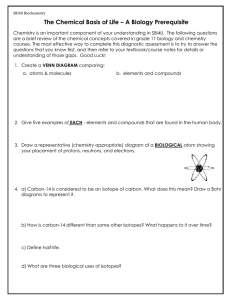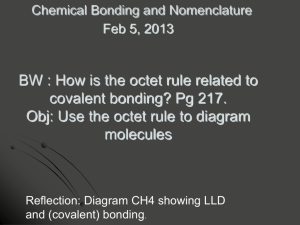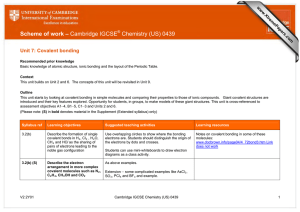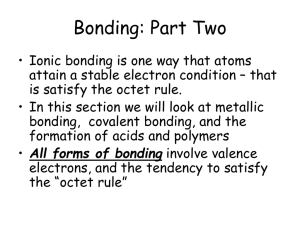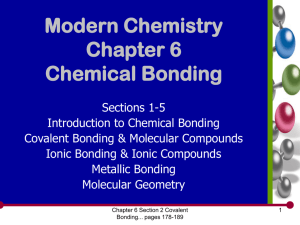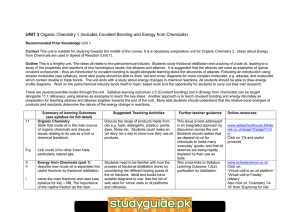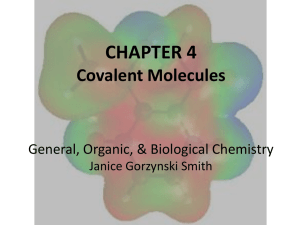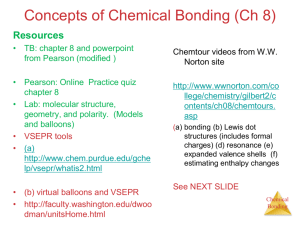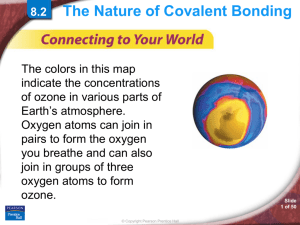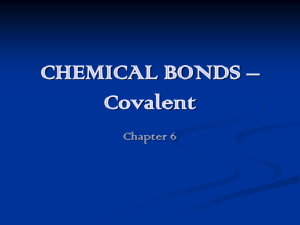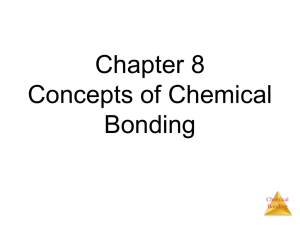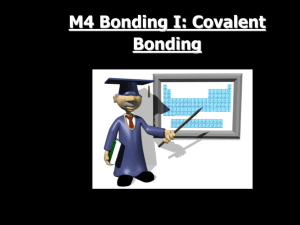File
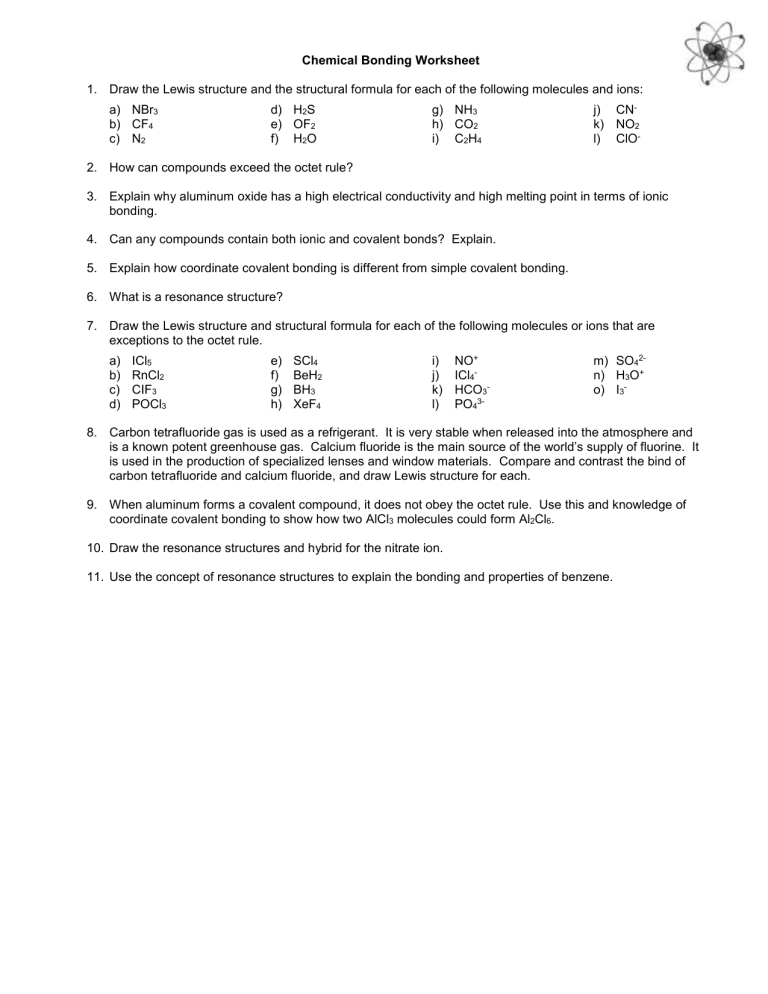
Chemical Bonding Worksheet
1. Draw the Lewis structure and the structural formula for each of the following molecules and ions: a) NBr b) CF c) N
2
4
3 d) H S e) OF f) H
2
2
2
O g) NH h) CO i) C
2
3
2
H
4 j) CN k) NO
2 l) ClO -
2. How can compounds exceed the octet rule?
3. Explain why aluminum oxide has a high electrical conductivity and high melting point in terms of ionic bonding.
4. Can any compounds contain both ionic and covalent bonds? Explain.
5. Explain how coordinate covalent bonding is different from simple covalent bonding.
6. What is a resonance structure?
7. Draw the Lewis structure and structural formula for each of the following molecules or ions that are exceptions to the octet rule. a) ICl
5 b) RnCl c) CIF
3 d) POCl
2
3 e) SCl f) BeH g) BH
3 h) XeF
4
4
2 i) NO + j) ICl
4
k) HCO
3
l) PO
4
3m) SO
4
2n) H
3
O + o) I
3
-
8. Carbon tetrafluoride gas is used as a refrigerant. It is very stable when released into the atmosphere and is a known potent greenhouse gas. Calcium fluoride is the main source of the world’s supply of fluorine. It is used in the production of specialized lenses and window materials. Compare and contrast the bind of carbon tetrafluoride and calcium fluoride, and draw Lewis structure for each.
9. When aluminum forms a covalent compound, it does not obey the octet rule. Use this and knowledge of coordinate covalent bonding to show how two AlCl
3
molecules could form Al
2
Cl
6
.
10. Draw the resonance structures and hybrid for the nitrate ion.
11. Use the concept of resonance structures to explain the bonding and properties of benzene.
